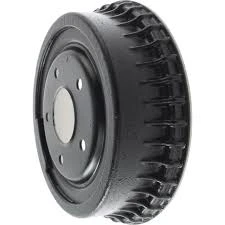
-
 Afrikaans
Afrikaans -
 Albanian
Albanian -
 Amharic
Amharic -
 Arabic
Arabic -
 Armenian
Armenian -
 Azerbaijani
Azerbaijani -
 Basque
Basque -
 Belarusian
Belarusian -
 Bengali
Bengali -
 Bosnian
Bosnian -
 Bulgarian
Bulgarian -
 Catalan
Catalan -
 Cebuano
Cebuano -
 Corsican
Corsican -
 Croatian
Croatian -
 Czech
Czech -
 Danish
Danish -
 Dutch
Dutch -
 ଇଂରାଜୀ |
ଇଂରାଜୀ | -
 Esperanto
Esperanto -
 Estonian
Estonian -
 Finnish
Finnish -
 French
French -
 Frisian
Frisian -
 Galician
Galician -
 Georgian
Georgian -
 German
German -
 Greek
Greek -
 Gujarati
Gujarati -
 Haitian Creole
Haitian Creole -
 hausa
hausa -
 hawaiian
hawaiian -
 Hebrew
Hebrew -
 Hindi
Hindi -
 Miao
Miao -
 Hungarian
Hungarian -
 Icelandic
Icelandic -
 igbo
igbo -
 Indonesian
Indonesian -
 irish
irish -
 Italian
Italian -
 Japanese
Japanese -
 Javanese
Javanese -
 Kannada
Kannada -
 kazakh
kazakh -
 Khmer
Khmer -
 Rwandese
Rwandese -
 Korean
Korean -
 Kurdish
Kurdish -
 Kyrgyz
Kyrgyz -
 Lao
Lao -
 Latin
Latin -
 Latvian
Latvian -
 Lithuanian
Lithuanian -
 Luxembourgish
Luxembourgish -
 Macedonian
Macedonian -
 Malgashi
Malgashi -
 Malay
Malay -
 Malayalam
Malayalam -
 Maltese
Maltese -
 Maori
Maori -
 Marathi
Marathi -
 Mongolian
Mongolian -
 Myanmar
Myanmar -
 Nepali
Nepali -
 Norwegian
Norwegian -
 Norwegian
Norwegian -
 Occitan
Occitan -
 Pashto
Pashto -
 Persian
Persian -
 Polish
Polish -
 Portuguese
Portuguese -
 Punjabi
Punjabi -
 Romanian
Romanian -
 Russian
Russian -
 Samoan
Samoan -
 Scottish Gaelic
Scottish Gaelic -
 Serbian
Serbian -
 Sesotho
Sesotho -
 Shona
Shona -
 Sindhi
Sindhi -
 Sinhala
Sinhala -
 Slovak
Slovak -
 Slovenian
Slovenian -
 Somali
Somali -
 Spanish
Spanish -
 Sundanese
Sundanese -
 Swahili
Swahili -
 Swedish
Swedish -
 Tagalog
Tagalog -
 Tajik
Tajik -
 Tamil
Tamil -
 Tatar
Tatar -
 Telugu
Telugu -
 Thai
Thai -
 Turkish
Turkish -
 Turkmen
Turkmen -
 Ukrainian
Ukrainian -
 Urdu
Urdu -
 Uighur
Uighur -
 Uzbek
Uzbek -
 Vietnamese
Vietnamese -
 Welsh
Welsh -
 Bantu
Bantu -
 Yiddish
Yiddish -
 Yoruba
Yoruba -
 Zulu
Zulu
what are drum brakes on a bike
Understanding Drum Brakes on a Bike
When it comes to bicycle braking systems, there are several different types that cyclists may encounter, each with its own unique mechanisms and benefits. One of these systems is the drum brake, a technology that has been used in various forms for many years. In this article, we will explore what drum brakes are, how they work, and their advantages and disadvantages in the context of bicycles.
What Are Drum Brakes?
Drum brakes are a type of braking system that utilizes friction to slow down or stop a bike. They consist of a drum, which is a cylindrical component, and brake shoes that press against the inner surface of the drum to create friction and reduce wheel rotation. When the cyclist pulls the brake lever, the brake shoes expand and press against the drum, generating the necessary friction to halt the bike’s motion.
How Do Drum Brakes Work?
The operation of drum brakes is relatively straightforward. The drum is mounted on the wheel hub, rotating with the wheel as the bike moves. Inside the drum, there are two brake shoes that are held against the drum's inner surface by springs. When the brake lever is engaged, a mechanism—often a cable or hydraulic system—pushes the brake shoes apart, pressing them against the drum. The resulting friction between the shoes and the drum slows down the wheel.
One notable feature of drum brakes is that they are typically enclosed, which helps protect them from dirt, water, and debris. This enclosure can result in more consistent braking performance in adverse weather conditions and reduces wear and tear from external elements.
Advantages of Drum Brakes
1. Durability Drum brakes are known for their robustness and longevity. The enclosed design protects the internal components from the elements, leading to less frequent maintenance and replacement compared to their disc brake counterparts.
2. Effective in Wet Conditions The enclosed nature of drum brakes provides better performance in wet conditions since they are less likely to become compromised by rain or mud.
what are drum brakes on a bike

4. Less Wheel Frame Flex Drum brakes often exert less stress on the wheel spokes compared to some disc brake designs, which can be advantageous in preserving wheel integrity.
Disadvantages of Drum Brakes
1. Heavier Weight Drum brake systems typically weigh more than other systems, such as disc brakes or rim brakes. This additional weight can be a consideration for competitive cyclists or those focused on lightweight setups.
2. Heat Dissipation Issues While drum brakes are effective, they can also have issues with heat dissipation. Prolonged braking, such as during long descents, can lead to brake fade, where the brakes become less effective due to overheating.
3. Less Modulation Drum brakes may not offer the same level of modulation and control as disc brakes, making it harder for cyclists to fine-tune their braking in certain situations.
4. Limited Availability Drum brakes are less common in modern performance bikes, meaning cyclists may have more difficulty finding replacement parts or upgrades compared to more popular systems.
Conclusion
In summary, drum brakes are a significant part of bicycle braking technology, offering a range of benefits, especially for casual riders who prioritize durability and performance in various weather conditions. While they have some disadvantages, such as weight and potential heat dissipation issues, they remain a solid choice for many riders. Understanding the functions and features of drum brakes can help cyclists make informed decisions when selecting their bike and braking system, ensuring they choose the best option for their riding style and needs. Whether navigating city streets or enjoying leisurely rides, drum brakes can provide reliable stopping power when needed.
-
Rear Drum Brakes Maintenance Tipsସମ୍ବାଦAug.04,2025
-
Key Components Affecting Brake Drum Functionସମ୍ବାଦAug.04,2025
-
Important Inspection for Truck Drum Brakeସମ୍ବାଦAug.04,2025
-
How to Prepare for Changing Rear Drum Brakesସମ୍ବାଦAug.04,2025
-
Essential Tools for Cleaning Drum Brakes Properlyସମ୍ବାଦAug.04,2025
-
Brake Drum Function Guideସମ୍ବାଦAug.04,2025
-
Safety Features of Red Brake Drumsସମ୍ବାଦAug.01,2025
